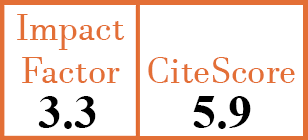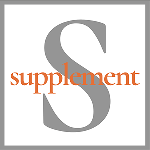Review
A meta-analysis of avascular necrosis in systemic lupus erythematosus: prevalence and risk factors
T. Nevskaya1, M.P. Gamble2, J.E. Pope3
- Division of Rheumatology, Department of Medicine, Joseph’s Health Care, London, Canada.
- Division of Rheumatology, Department of Medicine, Joseph’s Health Care, London, Canada.
- Division of Rheumatology, Department of Medicine, Joseph’s Health Care, London, Canada. janet.pope@sjhc.london.on.ca
CER9861
2017 Vol.35, N°4
PI 0700, PF 0710
Review
Free to view
(click on article PDF icon to read the article)
PMID: 28240590 [PubMed]
Received: 19/08/2016
Accepted : 23/01/2017
In Press: 24/02/2017
Published: 13/07/2017
Abstract
OBJECTIVES:
To determine the prevalence of and risk factors for avascular necrosis (AVN) in systemic lupus erythematosus (SLE).
METHODS:
MEDLINE, CINAHL, Web of Science, EMBASE and Cochrane Library were searched from inception to July, 2015 and a random effects model was used to combine frequencies; study quality was assessed using STROBE.
RESULTS:
2,041 citations identified 62 articles. Many results had high heterogeneity. The prevalence of symptomatic AVN was 9% (range 0.8%-33%) in SLE and 29% for asymptomatic AVN; femoral head was the most common location (8.0%). High-dose corticosteroids (CS) any CS use, maximum and cumulative dose, pulse therapy, and CS side-effects (hypertension, Cushings, but not diabetes mellitus or hyperlipidaemia) were associated with AVN, as was active SLE (cutaneous vasculitis, renal and neuropsychiatric manifestations, serositis, cytopenias) and Sjögren’s, Raynaud’s phenomenon, arthritis, cyclophosphamide (but not azathioprine mycophenolate mofetil, or methotrexate) and more damage (excluding musculoskeletal system). Antimalarial drugs were not protective. Rashes and oral ulcers were not associated with AVN. Mean daily dose of CS and duration of CS use had no impact on AVN occurence. Autoantibodies and other immunological markers did not predispose to AVN, except IgM anticardiolipin antibodies which doubled the risk. African Americans experienced more AVN (OR 1.8, p=0.04).
CONCLUSIONS:
AVN may occur in 1/3 of patients with SLE and 9% with symptoms. Features of active organ SLE (CNS, renal, cutaneous vasculitis, serositis, cytopenias) are associated with AVN as are CS, especially early in disease and at high doses. Those with early CS side-effects seem to have the highest risk of AVN.



